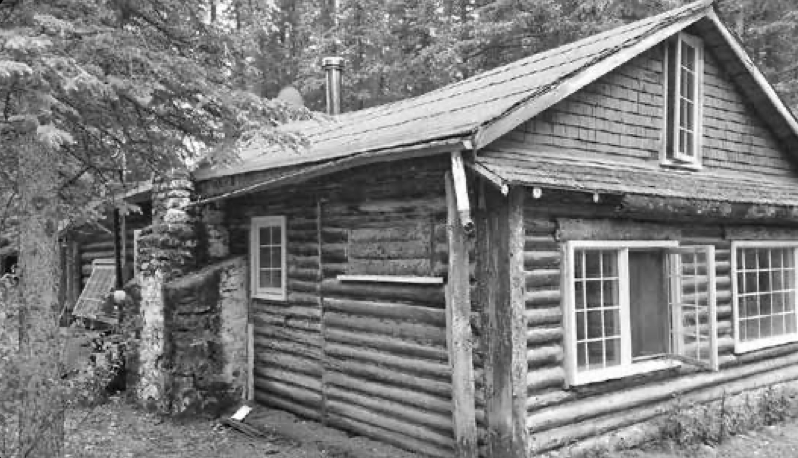The Cabin Era: The Evolution of Bragg Creek
Bragg Creek has always been a popular spot for visitors. As access improved, particularly in the summer, this area became a natural playground for many who came from Calgary to relax and camp in the outdoors, where the fishing then was outstanding.
Jim Craig, whose parents George and Josephine bought two lots on White Avenue in 1944, remembers that the fishing was so good that his mother would ask him to “bring six trout about a foot-long for supper” and it was easy to do. During the war years, he also remembers a large open area where troops would camp behind the Gene Fullerton store. They would place a net across the river, use explosives to stun the fish and then feed 300 men. Jim also claims that the river was almost fished out two years after the road to Bragg Creek was paved in 1967.
The boom of the cabin era really began back in the early 1920s, when E.R. (Jake) Fullerton started subdividing his Circle Five Ranch riverfront property. This was done mainly to accommodate his friends who were already making the ranch their public campground. The influx of people had already led to the launching of a “dude” riding business, a store, and (the still-standing) dance hall.
Jake’s first subdivision called for the development of 20 lots, mostly one-to- five acres each, west of the Round Hall on Bracken Road, and also across the river, reaching about a third of the way down White Avenue. This made sense because of where the bridge then spanned the Elbow. Jake and his brothers built many of the cabins and those who spent summers camping in Bragg Creek were eager to purchase these lots and build their own places. In 1933, Jake developed the river frontage east (and north) of the Round Hall, also along Bracken Road.
Bragg Creek’s next subdivision was established in 1939, also by Jake, and included the properties on both sides of Balsam, Pine, Spruce and River Drive North. There were approximately 60 lots, averaging one-half to one acre each. Jake had the foresight to establish laneways that exist to this day between the backs of the lots. This new phase of Bragg Creek also made sense for development, since a new steel bridge had been moved to this area following the 1932 flood. Some of these cabins still belong to the original families, including the Moons, Loneys and Martins.
Jake’s final land planning in 1944 divided the properties along the rest of Bracken Road (north of the Round Hall). Most of these lots now host large riverfront homes, but you’ll still find the odd original log cabin hidden in the trees. And thus the folk known as the “cabin people” began to lay down roots in Bragg Creek. Some of the cabin experience and era are captured in the stories that follow. Over many decades, the hamlet grew with new subdivisions and more cabins. This phase of our history significantly changed the nature of Bragg Creek from a logging and ranching community to a weekend and summer tourist hub.
Sources: Our Foothills (Pg 422) Manitoba: Freissen. 1975; Craig, Jim. Craig’s Cabin Story, 2018; AB Land Titles, Subdivision Plan 8556, 1920; ; AB Land Titles, Subdivision Plan 2821, 1933; AB Land Titles, Subdivision Plan 1741, 1939,
by Michele McDonald



























